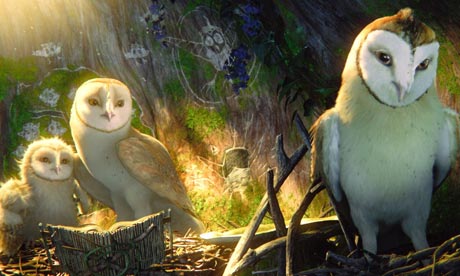
What is it about owls that so captivates us? What has made them among the most popular, reproduced, documented and frequently referenced birds in British culture? The answer is simple. Owls inhabit the one landscape that we weak-sighted, day-loving primates still haven't mastered. Night-time.
These glorious birds loom at us out of the darkness, freighted with a rich sense of mystery and, at one time, with a touch of evil. Owls were once seen as dangerous omens and not even Victorian intellectuals could resist the superstition. John Ruskin once announced: "Whatever wise people may say of them, I at least have found the owl's cry always prophetic of mischief." Seeing a bird land on a particular roof was often taken as a sign of impending doom within.
The owl had more than its nocturnal lifestyle to confirm its status as death's messenger-in-chief. All of the British species have binocular vision and suggest, perhaps, what humans might look like were we ever reincarnated as birds. Throw in their absolute silence in flight, the ghostly pale of the barn owl, their predatory habits, their eerie shrieking or moaning vocalisations, which cut through the darkness like an uncloaked dagger, and you have a set of creatures ready-made to inhabit our most cherished nightmares.
Even if 150 years of hard natural science and decades of electrified street light have helped to drain the owl of much of its menace, note how the stock metaphor for danger in television dramas is still either the sound or the brief glimpse of an owl landing on a tree just outside the scene of the crime. Over that same period owls have gradually been clasped tighter and tighter to the national bosom in the form of T-shirts, cushions and ornaments, Beatrix Potter's innocently blinking Old Brown or a score of wise-looking bespectacled owls in Disney cartoons. These birds are also the stars in Legend of the Guardians, a 3D animated film that hits cinemas next month.
Yet I think the real reason we cherish owls is that they have retained a slight frisson of danger. Of all widespread British birds, they are still the species we hear most – and where I live in Norfolk, it is nightly – but see the least. That glorious wavering disembodied song of the tawny owl still has an ability to raise the hairs on the backs of our necks. It reminds us as we lie in our beds that beyond the gutter's edge, over the rooftop, outside the penumbra of any streetlight, is a life and a beating heart that we can never quite know.

